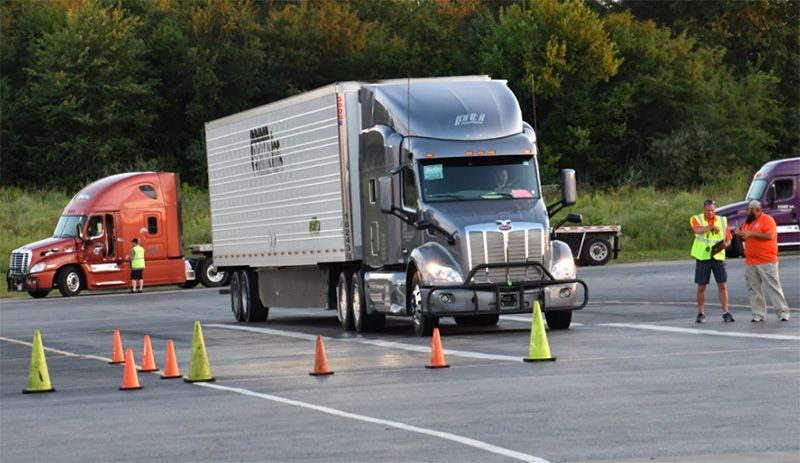Table of Contents
Do you need a Commercial Driver License (CDL), and you have no budget for it? Don’t worry, you can get it at no cost. Surprised? Just read on! You are in the right place. This article takes you step-by-step to get your free CDL.
You know how important this license is to you—it allows you to operate commercial vehicles such as trucks, buses, and vans. Getting a CDL can be a great way to start a career in the transportation industry, but it can also be expensive.
So it’s not a common feat to get a free CDL.
However, stay till the end to see some strategies to explore to achieve this.
To obtain a free CDL, note these strategies:
- Attend an Employer-Sponsored Training
- Check for State and Locally Funded Programs
- Apply for Financial Aid or Scholarship Through Community Colleges
- Use the Veteran Programme Channel
- Explore Opportunities from Nonprofit organizations
Thrilled? Continue reading!
1. Attend an Employer-Sponsored Training
To get a CDL for free, participate in employer-sponsored coaching. Find a company or school that offers paid CDL training or free truck driving schools. These programs will cover the cost of your CDL training and testing in exchange for a commitment to work for them for a certain period of time, usually between 8 months and 1 year.
If you agree to work for a certain amount of time, several trucking companies may provide you with free or sponsored CDL training. So look out for such organizations and choose one to work with to cover the cost of your training.
>>>MORE: How to Get a CDL Class B
2. Check for State and Locally Funded Programs
To get a CDL at no cost, look for CDL fully funded training programs in your state. Check with your state’s Department of Motor Vehicles (DMV) or local workforce development agencies for information on CDL training programs that may be partially or fully funded, and choose the fully funded option.
Some states have workforce development programs that assist with job training, including CDL training. Such as:
Colorado
The Colorado Department of Transportation provides free Commercial Driver License (CDL) training for employees who operate heavy equipment, such as snowplow drivers.
Florida
The Florida Job Growth Grant Fund is an initiative for economic development– that promotes a state-wide CDL training programme and apprenticeships.
Kentucky
Residents of Kentucky with a two-year working duration in an agriculture job that U.S Dept of labor recognizes and who are United States citizens or have legal authorization to work in the U.S. are eligible for the Kentucky Farmworkers Grant. The Kentucky Farmworkers grant is a program that provides eligible farmworkers and their families with education and career training assistance to achieve self-sufficiency and one of the career options that the grant covers is CDL training—a great help to become a professional truck driver.
Missouri
Eligible participants who are jobless or receive SNAP benefits can obtain free CDL training through the SkillUp and SkillUp SLATE programs. After completion, these programs also help with job placement.
3. Apply for Financial Aid or Scholarship Through Community Colleges
To access a free CDL, seek financial aid or scholarships through a community college.
To obtain financial aid or scholarships for college, you’ll need to follow a series of steps and meet certain requirements. Here’s a general guide on how to get financial aid or scholarships through a college:
Complete the Free Application for Federal Student Aid (FAFSA)
- The FAFSA is a crucial first step in applying for financial aid, including federal grants, loans, and work-study programs. It may also be required by colleges to consider you for their institutional aid or scholarships.
- Complete the FAFSA online at fafsa.gov. Be sure to provide accurate financial and personal information. The application becomes available on October 1 each year for the following academic year.
Research College-Specific Scholarships
Most colleges and universities offer scholarships to incoming students based on academic achievement, talents, leadership, or other criteria. Check the college’s financial aid office website or contact them directly to learn about available scholarships.
Apply for State and Local Aid
Some states and local governments offer financial aid or scholarships for residents. Research the availability of state grants and scholarships for which you may be eligible.
Search for Private Scholarships
Numerous private organizations, foundations, and companies offer scholarships. You can search for scholarships on websites like Fastweb, Scholarships.com, and College Board’s Scholarship Search. Tailor your search to your interests, background, or intended major.
Meet Deadlines
Be aware of application deadlines for financial aid and scholarships. Missing deadlines can result in missed opportunities for funding.
Meet Academic Requirements
Many scholarships are based on academic achievement, so maintain a strong GPA and excel in standardized tests like the SAT or ACT.
Complete Scholarship Essays and Applications
Some scholarships require essays or additional application materials. Take the time to craft compelling essays and submit well-prepared applications.
Seek Recommendation Letters
If scholarships require recommendation letters, request them well in advance from teachers, mentors, or employers who know you well.
Maintain a Strong Extracurricular Resume
Many scholarships consider your involvement in extracurricular activities, community service, and leadership roles. Active participation in such activities can strengthen your scholarship applications.
Consider Merit-Based and Need-Based Scholarships
Some scholarships are awarded based on merit, while others are need-based. Depending on your circumstances, you may qualify for one or both types.
>>>GET SMARTER: How to Get a CDL Class C
Understand Scholarship Renewal Requirements
If you receive a renewable scholarship, make sure to meet the renewal requirements, which often involve maintaining a specific GPA and taking a certain number of credits.
Apply for Work-Study Programs
The FAFSA may qualify you for work-study programs, which allow you to work part-time on or off-campus to earn money for educational expenses.
Compare Financial Aid Packages
Once you receive financial aid offers, carefully compare the packages from different colleges to determine the best financial option.
Appeal if Necessary
If your financial situation changes or if you believe you deserve more aid, you can appeal your financial aid award with the college’s financial aid office.
Get Regular Update on Information and Be Persistent
Be up to date on requirements, deadlines, and opportunities. Be persistent in your efforts to secure financial aid or scholarships. Explore all available options and don’t hesitate to reach out to financial aid offices for guidance.
4. Use the Veteran Programme Channel
To secure a CDL for free, employ the channel for veteran programs.
If you’re a military veteran, you may be eligible for CDL training through programs like the GI Bill. These programs can cover the cost of your CDL training and may even provide additional financial support.
5. Explore Opportunities from Nonprofit organizations
To obtain a CDL at no cost, be on the lookout for NGO programs on free CDL training, financial support, or links to opportunities for free CDL training.
Some nonprofit organizations and community-based groups run CDL training programs with the goal of helping people enter the workforce. These programs may offer reduced-cost or free training.
Recap
To get a CDL for free, enroll in an employer-sponsored training course, look into state and local funding sources, apply for community college financial assistance or scholarships, utilize the veteran program, and investigate chances from nonprofit organizations.



















